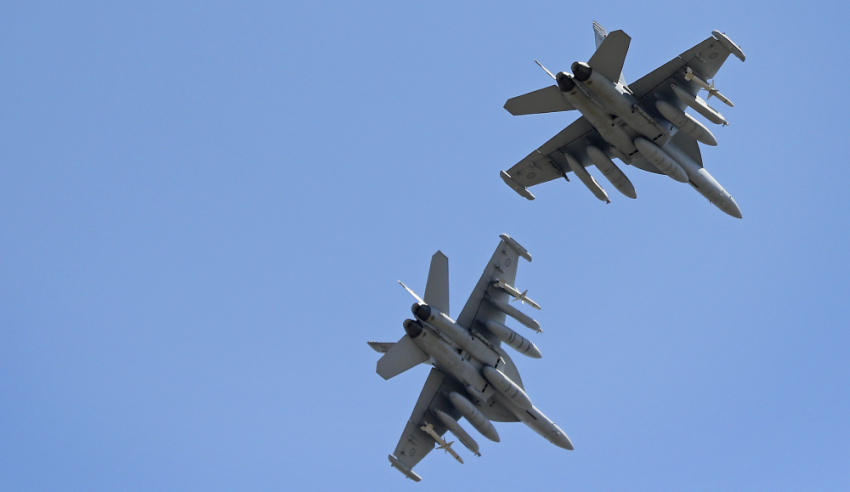A US Navy test has revealed the ability of F/A-18 E/F Super Hornet and EA-18G Growler pilots to remotely control fighter and attack platforms from the cockpit, revealing a new possibility for Australia’s own fleet of Super Hornets and Growlers.
Boeing and the US Navy successfully flew two autonomously controlled EA-18G Growlers at Naval Air Station Patuxent River as unmanned air systems using a third Growler as a mission controller for the other two.
The flights, conducted during the Navy Warfare Development Command’s annual fleet experiment (FLEX) exercises, proved the effectiveness of technology allowing F/A-18 Super Hornets and EA-18G Growlers to perform combat missions with unmanned systems.
Tom Brandt, Boeing Manned-UnManned Teaming demonstration lead, explained, "This demonstration allows Boeing and the Navy the opportunity to analyse the data collected and decide where to make investments in future technologies. It could provide synergy with other US Navy unmanned systems in development across the spectrum and in other services."
Over the course of four flights, 21 demonstration missions were completed.
The EA-18G Growler is an electronic attack aircraft. Growler is capable of disrupting, deceiving or denying a broad range of military electronic systems, including radars and communications.
Based on F/A-18E/F Super Hornet variant of the wildly successful Boeing Hornet, the EA-18G Growler has proven itself to be an invaluable asset to the US when deployed overseas.
As the only nation besides the US to fly the Growler, Australia has developed unique training procedures in conjunction with US Navy partners to fully utilise the capabilities of the aircraft.
Brandt added, "This technology allows the Navy to extend the reach of sensors while keeping manned aircraft out of harm’s way."
The Growler incorporates a number of advancements over the traditional Super Hornet, including:
- An additional avionics suite;
- Enhanced radio frequency receivers;
- An improved communications suite; and
- ALQ radio-frequency jamming pods, which enable it to jam enemy systems.
Australia's fleet of 11 EA-18G Growlers will be based at RAAF Base Amberley and operate in conjunction with our air, land and sea forces.
"It’s a force multiplier that enables a single aircrew to control multiple aircraft without greatly increasing workload. It has the potential to increase survivability as well as situational awareness," Brandt explained.
Initially purchased alongside the more traditional Super Hornet variants to supplement Australia's ageing fleet of classic Hornets and the diminished strike capability following the retirement of the F-111s, prior to the full integration of the Air Force's 72 planned F-35s, IOC is expected to be delivered to the RAAF in the coming months.
Australia's Growlers were part of a larger US Navy buy of 44 Super Hornets and Growlers in July 2014, with the first Australian EA-18G making its first flight in July 2015.
All 12 of Australia's initial Growlers were formally welcomed to their home base at RAAF Amberley in 2017, providing air crews and pilots the opportunity to build familiarity and an understanding of the aircraft and its unique capabilities.
It is now expected that the Growlers of No. 6 Squadron RAAF will be capable of providing limited, force-level electronic warfare. This means that until final operating capability (FOC) is achieved, the aircraft will be largely limited to peacetime operations or responding to regional contingencies as needed.
Reaching FOC will require additional testing and broader integration with key ADF assets, particularly the Navy's new air warfare destroyers, Air Force's E-7 Wedgetail AEWC aircraft and later F-35s and key ground assets of the Army to ensure that the ADF is developed into a full-spectrum, integrated force.
FOC for Australia's Growlers is expected in 2022.


